BY DEFENCE JOURNALIST SAHIL | T.I.N. NETWORK
Forging Joint Frontiers: Cutting Edge Brigade and Indian Air Force Enhance Interoperability at Sirsa Airbase
Sirsa, Haryana | October 22, 2025 —
In a landmark display of operational synergy and jointmanship, the Cutting Edge Brigade of the Dot On Target Division carried out an intensive coordination and interoperability exercise at Air Force Station Sirsa, underlining the Indian Armed Forces’ continued emphasis on joint operations, mission effectiveness, and battlefield integration. The exercise was aimed at refining the synchronisation of Army-Air Force operational planning, enhancing combat readiness, and validating real-time joint response mechanisms for future multi-domain operations.
A New Chapter in Joint Warfare Evolution
The Indian Army and Indian Air Force have, in recent years, accelerated the shift towards integrated warfare doctrines—focusing on synergy, precision, and joint response capability. The exercise at Sirsa brought this vision to life as mechanised infantry, air defence units, and combat support elements of the Cutting Edge Brigade conducted on-ground coordination with IAF fighter squadrons and ground controllers.
Officers from both services jointly planned tactical maneuvers, real-time air support coordination, and precision target acquisition tasks under simulated battlefield conditions. The high-tempo drills demonstrated the combined might of land and air forces acting in unison to dominate the battlespace through seamless communication, shared situational awareness, and joint command structures.
The operations also reflected the ongoing transformation of Indian warfighting philosophy—from service-specific planning to multi-domain integration, where speed, accuracy, and synergy determine operational success.
The Setting: Air Force Station Sirsa — Strategic Powerhouse of the North-Western Sector
Located in Haryana, Air Force Station Sirsa holds critical strategic importance in India’s north-western defence grid. Positioned near key forward sectors, the base is equipped to host multi-role combat aircraft (MRCAs) and serves as a rapid response hub for both offensive and defensive operations along the western front.
During the exercise, Air Force Station Sirsa provided the aerial dimension—deploying air assets for simulated Close Air Support (CAS), Air Interdiction, and Combat Search and Rescue (CSAR) operations. The coordinated drills between IAF pilots and Army ground controllers ensured smooth real-time engagement and safe airspace management in a complex, high-threat environment.
The airfield also served as the venue for integrated mission planning sessions, where both services worked together to develop a unified operational picture through advanced communication systems and tactical data links.
Cutting Edge Brigade: Precision, Power, and Preparedness
The Cutting Edge Brigade has earned its reputation as a frontline formation known for innovation, adaptability, and high operational readiness. Comprising modern mechanised elements, advanced surveillance assets, and a robust command-and-control setup, the brigade epitomises the spirit of the Indian Army’s Integrated Battle Group (IBG) concept — swift, self-contained, and capable of decisive action.
Its participation in the Sirsa coordination exercise underscored its pivotal role in combined arms warfare. The brigade’s integration with IAF air assets showcased the new-age warfare doctrine where mechanised thrusts, precision strikes, and air mobility converge to deliver a lethal operational punch.
Senior Army officials overseeing the exercise highlighted that the training was designed to “build muscle memory” for rapid joint responses in case of any contingency, especially in the desert and semi-desert theatres of the western front.
Jointmanship: The Core of India’s Future Battle Doctrine
“Synergy and jointness are not just slogans but operational necessities,” a senior officer from the Dot On Target Division noted. “The battlefield of the future will demand integrated force application—where land, air, cyber, and space elements operate as a single cohesive organism. Exercises like these lay the foundation for that reality.”
The term Jointmanship has evolved into a cornerstone of India’s strategic planning, particularly after the establishment of the Department of Military Affairs (DMA) and the Chief of Defence Staff (CDS). With the Indian Armed Forces moving toward theatre commands, joint operations like the one at Sirsa serve as practical frameworks for developing interoperability across all levels—tactical, operational, and strategic.
These exercises also test emerging technologies such as AI-based decision systems, networked battlefield surveillance, and joint targeting protocols, ensuring that both Army and Air Force elements can share real-time data for faster decision-making and mission execution.
Commanders’ Vision: Preparing for Multi-Domain Future
During the exercise, commanders from both the Army and Air Force addressed troops and highlighted the importance of adaptability in dynamic operational environments. They reiterated that future wars would not be fought in isolation but through integrated command networks leveraging joint intelligence, surveillance, and precision strike capabilities.
The leadership’s focus remained on improving tactical coordination between ground and air assets — from the moment of target acquisition to post-strike damage assessment. The exercise was therefore not just a demonstration of strength but a laboratory for refining doctrines, assessing vulnerabilities, and enhancing coordination protocols.
The emphasis on real-time coordination, combined planning, and integrated execution reflects the Indian military’s broader strategic transformation — ensuring preparedness for short, swift, and high-intensity conflicts that require maximum efficiency and seamless communication.
Bridging Domains: Army-Air Force Integration in Practice
The Sirsa synergy operation included multiple stages — mission planning, live coordination drills, and debrief sessions. Army units practiced rapid mobility, terrain exploitation, and target designation for airstrikes, while IAF teams executed simulated close air support and battlefield interdiction.
Electronic warfare teams ensured secure communication networks, while logistics and maintenance units from both services rehearsed joint support mechanisms. The exercise also involved emergency response simulations — including rapid casualty evacuation (CASEVAC) via IAF helicopters and coordination with ground medical units.
Such comprehensive training enhances the Indian Armed Forces’ ability to fight as one — reducing redundancy, increasing efficiency, and delivering superior operational results under stress conditions.
The Road Ahead: From Synergy to Integration
With increasing focus on Theatre Command Integration, the synergy seen at Sirsa is a precursor to the larger operational framework India is developing for its armed forces. The emphasis is clear — jointness must translate into battlefield dominance through interoperable systems, common doctrines, and integrated logistics.
The exercise has thus become a model of jointmanship in action — reaffirming that India’s combat power lies not only in the strength of its individual services but in their unified operational harmony.
As the Indian Army and Indian Air Force continue to refine their collaborative doctrines, exercises like the one at Sirsa stand as milestones in India’s journey toward a fully networked, multi-domain, and future-ready defence force.
Conclusion
The Cutting Edge Brigade’s coordination with the Indian Air Force at Sirsa reflects the essence of modern warfare — where precision, speed, and integration decide victory. From the deserts of Rajasthan to the northern frontiers, India’s armed forces are steadily moving toward a new era of joint operations and strategic interoperability.
This joint exercise not only strengthened the bond between two powerful services but also reinforced the message that India’s security architecture is evolving — technologically advanced, operationally integrated, and tactically invincible.
BY DEFENCE JOURNALIST SAHIL | T.I.N. NETWORK
संयुक्त शक्ति का प्रदर्शन: सरसा एयरबेस पर ‘कटिंग एज ब्रिगेड’ और भारतीय वायुसेना ने दिखाई तालमेल की ताकत
सरसा, हरियाणा | 22 अक्टूबर 2025 —
भारतीय थलसेना और वायुसेना के बीच बढ़ती जॉइंटनेस और सिनर्जी को मजबूत करने के उद्देश्य से ‘डॉट ऑन टारगेट डिवीजन’ की कटिंग एज ब्रिगेड ने सरसा एयरफोर्स स्टेशन पर एक उच्चस्तरीय समन्वय और इंटरोपरेबिलिटी अभ्यास किया। यह अभ्यास भारतीय सशस्त्र बलों के उस नए दौर का प्रतीक रहा जिसमें तीनों सेनाएं — थल, वायु और नौसेना — मिलकर भविष्य के बहु-क्षेत्रीय युद्धक्षेत्र (Multi-Domain Operations) के लिए तैयार की जा रही हैं।
इस अभ्यास का मुख्य उद्देश्य सेना और वायुसेना के बीच ऑपरेशनल प्लानिंग का तालमेल, युद्धक्षेत्र में तुरंत संयुक्त प्रतिक्रिया (real-time joint response) और उच्च स्तरीय मिशन इफेक्टिवनेस हासिल करना था। यह एक ऐसा आयोजन था जिसने भारतीय सेना की संयुक्त युद्ध क्षमता को और अधिक प्रभावशाली तरीके से प्रदर्शित किया।
संयुक्त युद्ध की नई परिभाषा — समन्वय से सामरिक श्रेष्ठता तक
पिछले कुछ वर्षों में भारतीय सेना और भारतीय वायुसेना ने अपने युद्ध सिद्धांतों में बड़ा बदलाव किया है। अब पारंपरिक “सर्विस-आधारित” युद्ध से आगे बढ़कर “इंटीग्रेटेड वारफेयर” पर जोर दिया जा रहा है — जिसमें तेजी, सटीकता और समन्वय मुख्य हथियार हैं।
सरसा में आयोजित इस अभ्यास में मैकेनाइज्ड इन्फैंट्री, एयर डिफेंस यूनिट्स और कॉम्बैट सपोर्ट एलिमेंट्स ने मिलकर वायुसेना के लड़ाकू विमानों और ग्राउंड कंट्रोलर्स के साथ अभ्यास किया। संयुक्त मिशन प्लानिंग, एयर सपोर्ट कोऑर्डिनेशन, और टारगेट एक्विजिशन जैसी गतिविधियों ने दोनों सेनाओं की क्षमता को एक मंच पर लाकर दिखाया कि किस तरह थल और वायु की संयुक्त शक्ति किसी भी जटिल युद्ध परिदृश्य में निर्णायक बढ़त दिला सकती है।
यह अभ्यास उस बदलते भारतीय सैन्य दर्शन का सजीव उदाहरण था जिसमें ‘गति’ (speed), ‘सटीकता’ (accuracy) और ‘सिनर्जी’ (synergy) को सफलता की कुंजी माना गया है।
सरसा एयरफोर्स स्टेशन: उत्तर-पश्चिम क्षेत्र का सामरिक गढ़
हरियाणा में स्थित एयरफोर्स स्टेशन सरसा उत्तर-पश्चिम भारत के सामरिक दृष्टिकोण से अत्यंत महत्वपूर्ण है। पश्चिमी मोर्चे के नजदीक स्थित यह एयरबेस भारतीय वायुसेना की त्वरित प्रतिक्रिया (rapid response) की मुख्य धुरी है। यहां से न केवल रक्षात्मक बल्कि आक्रामक अभियानों का संचालन भी किया जा सकता है।
इस अभ्यास के दौरान वायुसेना ने विभिन्न प्रकार के मल्टी-रोल कॉम्बैट एयरक्राफ्ट (MRCAs) की तैनाती कर एयर सपोर्ट मिशन जैसे क्लोज एयर सपोर्ट (CAS), एयर इंटरडिक्शन और कॉम्बैट सर्च एंड रेस्क्यू (CSAR) का अनुकरण किया। इन अभियानों के दौरान थलसेना के ग्राउंड कंट्रोलर्स और वायुसेना के पायलटों के बीच रियल-टाइम तालमेल देखा गया, जो कि किसी भी संयुक्त युद्ध की रीढ़ होती है।
सरसा एयरबेस ने संयुक्त मिशन प्लानिंग का केंद्र बनकर दोनों सेनाओं के बीच एकीकृत सामरिक दृष्टिकोण तैयार किया। उन्नत कम्युनिकेशन सिस्टम्स और टैक्टिकल डेटा लिंक के जरिए साझा युद्धक्षेत्र चित्र (Common Operational Picture) विकसित किया गया, जिससे समग्र युद्धक समन्वय मजबूत हुआ।
कटिंग एज ब्रिगेड — नवाचार, शक्ति और तत्परता का प्रतीक
‘कटिंग एज ब्रिगेड’ भारतीय थलसेना की उन अग्रणी टुकड़ियों में से है जो अपनी तत्परता, लचीलापन और तकनीकी क्षमता के लिए जानी जाती हैं। इस ब्रिगेड में आधुनिक मैकेनाइज्ड युद्धक वाहन, उच्च स्तरीय सर्विलांस सिस्टम और मज़बूत कमांड-एंड-कंट्रोल नेटवर्क मौजूद हैं।
यह ब्रिगेड भारतीय सेना के इंटीग्रेटेड बैटल ग्रुप (IBG) सिद्धांत की साकार अभिव्यक्ति है — जो किसी भी स्थिति में त्वरित, स्वायत्त और निर्णायक कार्रवाई करने में सक्षम है। सरसा अभ्यास में ब्रिगेड ने वायुसेना के साथ समन्वय करते हुए यह दर्शाया कि भविष्य के युद्धों में मैकेनाइज्ड थ्रस्ट, एयर मोबिलिटी और प्रिसीजन स्ट्राइक का समन्वय ही निर्णायक कारक होगा।
सीनियर आर्मी अधिकारियों ने बताया कि इस तरह के अभ्यासों से सैनिकों की ‘मसल मेमोरी’ तैयार होती है — यानी किसी भी आकस्मिक स्थिति में बिना विलंब के त्वरित संयुक्त प्रतिक्रिया देने की क्षमता।
जॉइंटनेस: भारत की भविष्य की सैन्य रणनीति का मूल तत्व
“सिनर्जी और जॉइंटनेस केवल नारे नहीं, बल्कि युद्धक्षेत्र की आवश्यकता हैं,” डॉट ऑन टारगेट डिवीजन के एक वरिष्ठ अधिकारी ने कहा। “भविष्य का युद्ध स्थल केवल भूमि या आकाश तक सीमित नहीं रहेगा — बल्कि उसमें साइबर, अंतरिक्ष और इलेक्ट्रॉनिक डोमेन भी शामिल होंगे। ऐसे में एकीकृत बल (Integrated Force Application) ही जीत की कुंजी होगी।”
संयुक्तता (Jointmanship) की यह अवधारणा भारत के रक्षा ढांचे में चीफ ऑफ डिफेन्स स्टाफ (CDS) और डिपार्टमेंट ऑफ मिलिट्री अफेयर्स (DMA) की स्थापना के बाद और अधिक मजबूत हुई है। भारत जिन ‘थियेटर कमांड्स’ की दिशा में बढ़ रहा है, सरसा का यह अभ्यास उसी भविष्य की नींव रखता है।
इस दौरान AI आधारित निर्णय प्रणाली, नेटवर्क-सेंट्रिक ऑपरेशंस, और संयुक्त टारगेटिंग जैसे आधुनिक प्रयोग भी किए गए — जिससे सेना और वायुसेना दोनों रियल-टाइम डेटा साझा कर त्वरित मिशन निष्पादन में सक्षम बनीं।
कमांडर्स का विजन — मल्टी-डोमेन भविष्य की तैयारी
अभ्यास के दौरान दोनों सेनाओं के वरिष्ठ अधिकारियों ने जवानों को संबोधित करते हुए कहा कि भविष्य के युद्धों में सफलता केवल हथियारों से नहीं, बल्कि समन्वित नेतृत्व और साझा ऑपरेशनल दृष्टिकोण से तय होगी।
कमांडरों ने इस बात पर बल दिया कि अब युद्ध ‘सिलो’ में नहीं लड़े जाएंगे — बल्कि जॉइंट इंटेलिजेंस, सर्विलांस और प्रिसीजन स्ट्राइक के नेटवर्क के माध्यम से लड़े जाएंगे। उन्होंने कहा कि सरसा का यह संयुक्त अभ्यास केवल प्रदर्शन नहीं बल्कि भविष्य की योजनाओं का परीक्षण प्रयोगशाला (Operational Laboratory) है, जहां सिद्धांतों को व्यावहारिक रूप से परखा गया।
यह अभ्यास दिखाता है कि भारतीय सेनाएं अब तेज़, निर्णायक और तकनीकी रूप से अत्याधुनिक लड़ाइयों के लिए तैयार हैं — जहां सूचना की गति और समन्वय की गुणवत्ता ही सफलता तय करती है।
सेना-वायुसेना एकता का अभ्यास: सरसा में बहु-स्तरीय समन्वय
इस ऑपरेशन के कई चरण रहे — मिशन प्लानिंग, लाइव कोऑर्डिनेशन ड्रिल्स और डिब्रीफिंग सत्र। थलसेना की इकाइयों ने तेजी से गतिशीलता (rapid mobility), भूभाग का उपयोग (terrain exploitation), और लक्ष्य निर्धारण (target designation) जैसे कौशलों का अभ्यास किया, जबकि वायुसेना ने क्लोज एयर सपोर्ट और इंटरडिक्शन मिशन को अंजाम दिया।
इलेक्ट्रॉनिक वारफेयर टीमों ने सुरक्षित कम्युनिकेशन नेटवर्क बनाए रखा और दोनों सेनाओं की लॉजिस्टिक्स इकाइयों ने संयुक्त सपोर्ट सिस्टम का अभ्यास किया। अभ्यास के दौरान कैजुअल्टी एवाक्यूएशन (CASEVAC) और आपातकालीन रेस्क्यू ऑपरेशंस का भी रिहर्सल किया गया।
इन सभी प्रयासों ने यह साबित किया कि भारतीय सशस्त्र बल अब किसी भी तनावपूर्ण स्थिति में एकजुट होकर, अधिक प्रभावी और त्वरित तरीके से कार्रवाई करने में सक्षम हैं।
आगे का रास्ता — समन्वय से एकीकरण तक
भारत में ‘थियेटर कमांड इंटीग्रेशन’ की दिशा में हो रहे कार्यों के बीच सरसा का यह अभ्यास एक महत्वपूर्ण मील का पत्थर है। यह दर्शाता है कि अब सेनाओं की जॉइंटनेस केवल सिद्धांत नहीं रही, बल्कि यह भारत की युद्ध नीति का सक्रिय हिस्सा बन चुकी है।
यह अभ्यास यह संदेश देता है कि भारत की सैन्य शक्ति केवल उसके हथियारों या सैनिकों में नहीं, बल्कि उसकी एकीकृत संचालन क्षमता में निहित है।
थलसेना और वायुसेना के बीच इस प्रकार के अभ्यास न केवल मौजूदा क्षमताओं को परखते हैं, बल्कि भविष्य की युद्ध अवधारणाओं के लिए भी दिशा निर्धारित करते हैं — जिससे भारतीय सशस्त्र बल नेटवर्क-सेंट्रिक, मल्टी-डोमेन और फ्यूचर-रेडी बन सकें।
निष्कर्ष
सरसा में कटिंग एज ब्रिगेड और भारतीय वायुसेना का यह संयुक्त अभ्यास आधुनिक युद्ध की सच्ची झलक है — जहां स्पीड, प्रिसीजन और इंटीग्रेशन जीत का आधार हैं।
चाहे रेगिस्तान की रेत हो या उत्तरी सीमाएं — भारतीय सशस्त्र बल अब एकजुट होकर ऐसी संयुक्त रणनीतियों की दिशा में अग्रसर हैं जो न केवल युद्धक्षेत्र में बल्कि सामरिक नीति के हर स्तर पर भारत को बढ़त दिला रही हैं।
यह अभ्यास न केवल दोनों सेनाओं के बीच तालमेल को मजबूत करता है बल्कि यह भी दर्शाता है कि भारत की सुरक्षा व्यवस्था अब पहले से कहीं अधिक तकनीकी रूप से उन्नत, ऑपरेशनल रूप से एकीकृत और रणनीतिक रूप से अजेय बन चुकी है।

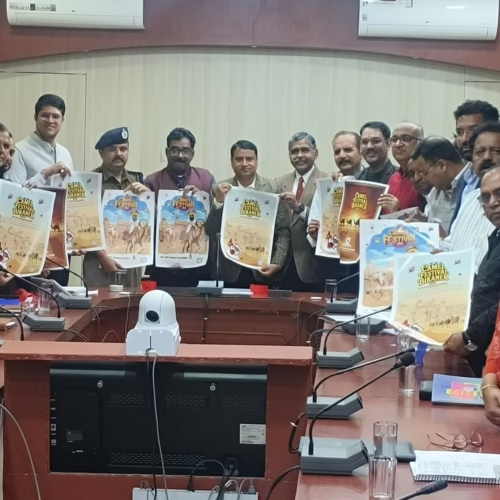

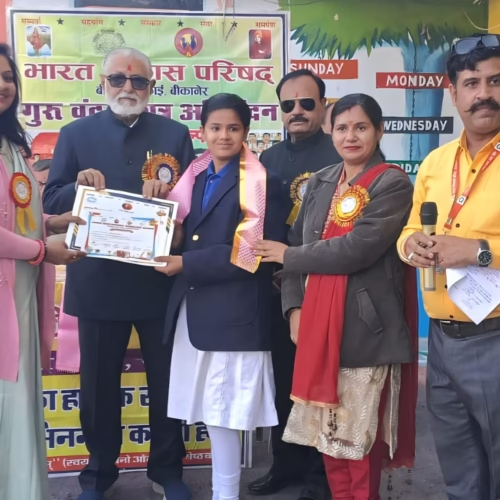

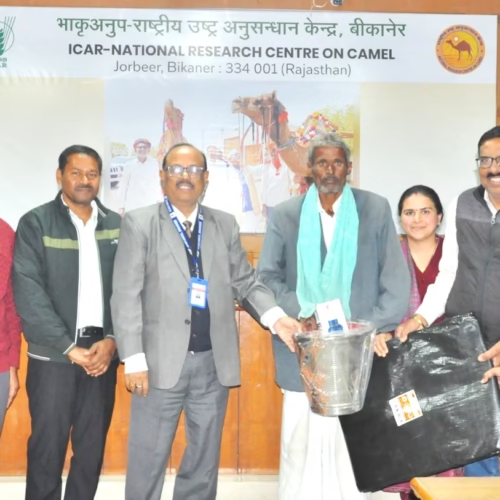


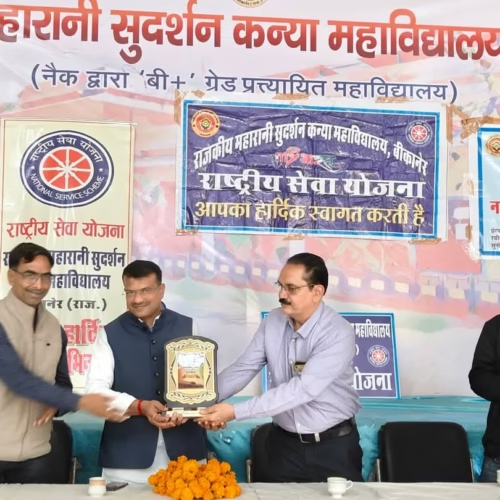
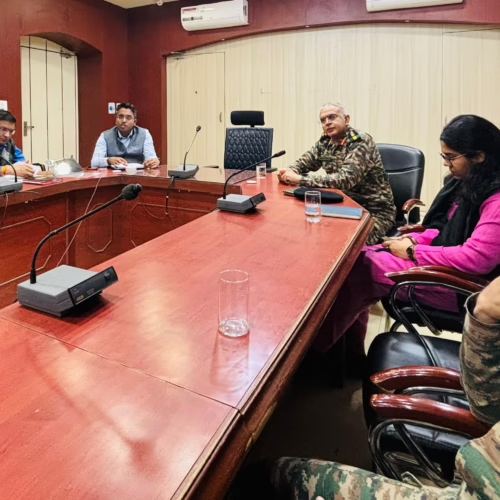
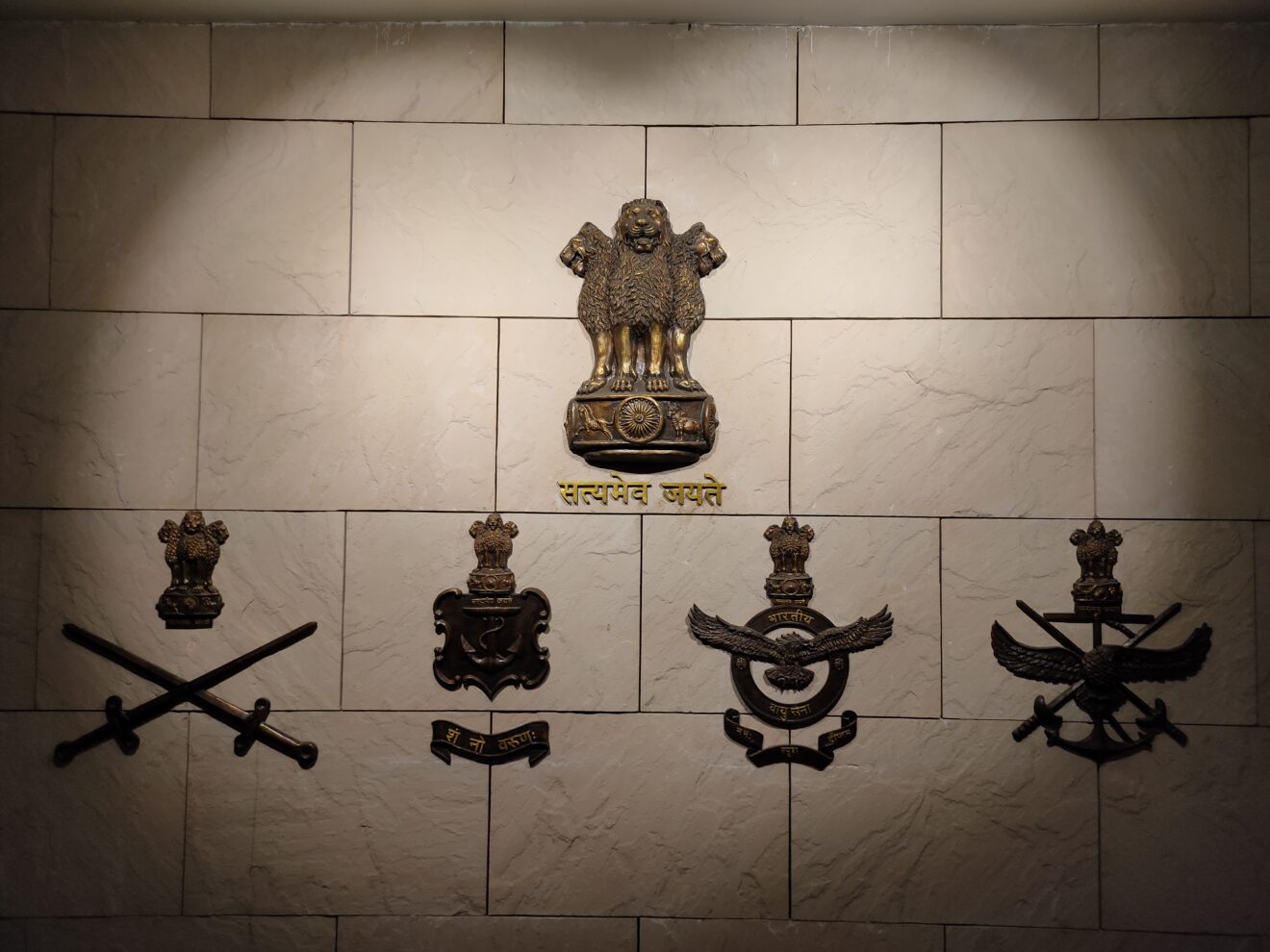




Add Comment